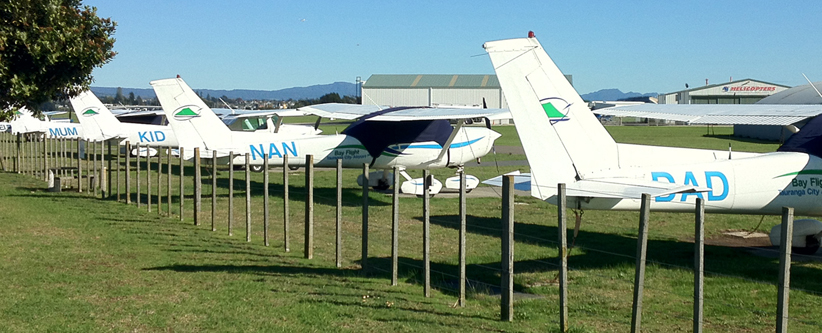203car_Rings, roundabouts and runways
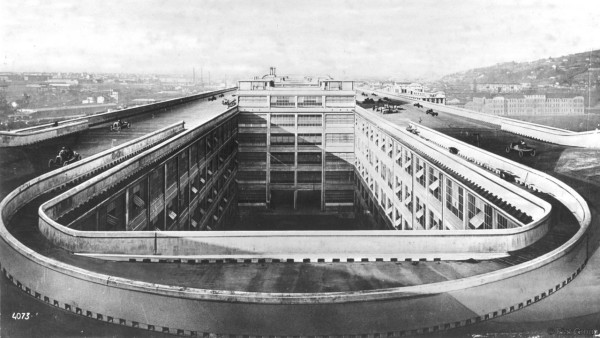
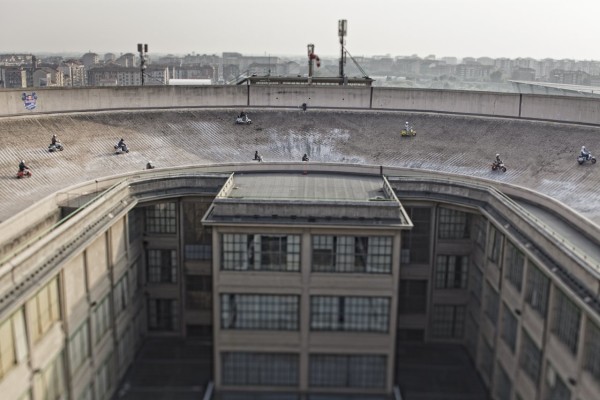
Event partecipants racing in the oval on the top of the Lingotto building at the Red Bull Lingotto Special in Torino on the 26/09/2011.
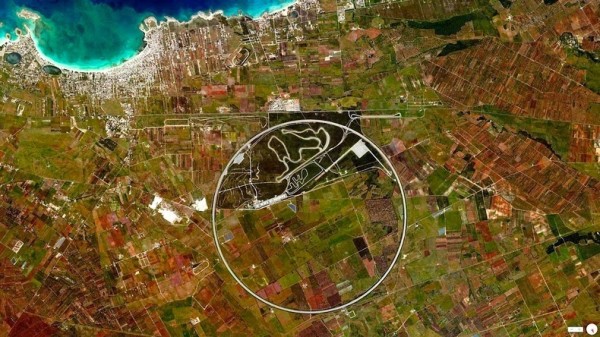
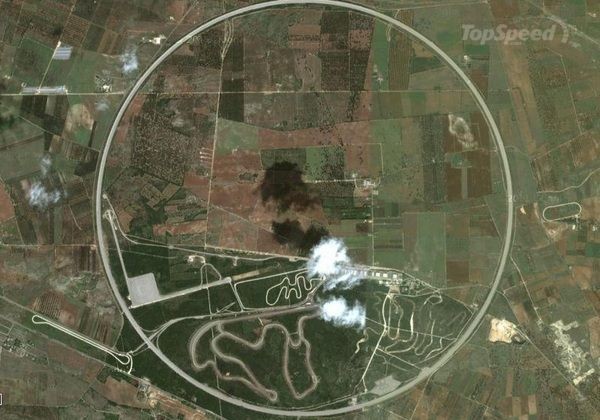 FIATETTURA.
FIAT, Fabbrica Italiana Automobili Torino, have produced notable modern infrastructure with innovative rings roads both at the scale of architecture, Lingotto, and landscape, Nardo Ring.
FIAT opened Lingotto in 1923 and the design (Matté Trucco) was unusual in that the production assembly line spiralled up the five floors such that raw materials entered at ground floor and completed cars emerged at rooftop level where there was a test track. At the time of opening in 1923, Lingotto the largest car factory in the world at that time. For its time, the Lingotto building was avant-garde, influential and impressive—Le Corbusier called it “one of the most impressive sights in industry”, and “a guideline for town planning”. 80 different models of car were produced there in its lifetime, including the Fiat Topolino of 1936.
By the time Lingotto closed in 1982 (today Lingotto is a Hotel), FIAT had produced an even greater feat of test track engineering but this time in the South of Italy in the town of Nardò in Puglia which was completed in 1975.
The circular track has a 12.5 kilometre circumference and has four 4m lanes for cars and motorcycles totaling 16 metres in width and has a separate inner ring for trucks at a width of 9 metres. In the cars/motorcycle ring the lanes are banked at such a degree that a driver in the outer most lane doesn’t need to turn the wheel while driving at speeds of up to 240 kmph. In essence, at the so-called neutral speed which is different for the four lanes, one can drive as if in a straight lane. However extremely fast cars still require the steering wheel to be turned when going faster than the maximum neutral speed. In the process of fighting a turn as needed when going faster than the neutral speed quite a bit of potential top speed is lost and hence a fast car will go faster in a straight line than what is possible on the Nardó Ring. Even at the neutral speed, in a banked turn a car runs a bit heavier than it would in a straight line, since the downforce created by the banking increases the rolling resistance on the tyres.
The neutral speed for the four car/motorcycle lanes are respectively:
FIATETTURA.
FIAT, Fabbrica Italiana Automobili Torino, have produced notable modern infrastructure with innovative rings roads both at the scale of architecture, Lingotto, and landscape, Nardo Ring.
FIAT opened Lingotto in 1923 and the design (Matté Trucco) was unusual in that the production assembly line spiralled up the five floors such that raw materials entered at ground floor and completed cars emerged at rooftop level where there was a test track. At the time of opening in 1923, Lingotto the largest car factory in the world at that time. For its time, the Lingotto building was avant-garde, influential and impressive—Le Corbusier called it “one of the most impressive sights in industry”, and “a guideline for town planning”. 80 different models of car were produced there in its lifetime, including the Fiat Topolino of 1936.
By the time Lingotto closed in 1982 (today Lingotto is a Hotel), FIAT had produced an even greater feat of test track engineering but this time in the South of Italy in the town of Nardò in Puglia which was completed in 1975.
The circular track has a 12.5 kilometre circumference and has four 4m lanes for cars and motorcycles totaling 16 metres in width and has a separate inner ring for trucks at a width of 9 metres. In the cars/motorcycle ring the lanes are banked at such a degree that a driver in the outer most lane doesn’t need to turn the wheel while driving at speeds of up to 240 kmph. In essence, at the so-called neutral speed which is different for the four lanes, one can drive as if in a straight lane. However extremely fast cars still require the steering wheel to be turned when going faster than the maximum neutral speed. In the process of fighting a turn as needed when going faster than the neutral speed quite a bit of potential top speed is lost and hence a fast car will go faster in a straight line than what is possible on the Nardó Ring. Even at the neutral speed, in a banked turn a car runs a bit heavier than it would in a straight line, since the downforce created by the banking increases the rolling resistance on the tyres.
The neutral speed for the four car/motorcycle lanes are respectively:
- Lane 1 – 100 kmph
- Lane 2 – 140 kmph
- Lane 3 – 190 kmph
- Lane 4 – 240 kmph

203car_PLASTIC PLANE HANGAR
WHAT_architecture ‘plastic’ rendering of the new Boeing 787 Dreamliner – a plastic plane’ – inside the proposed wide bodied aircraft maintenance facility for Christchurch… the 100m spanning hangar naturally enough is made from recycled plastic.
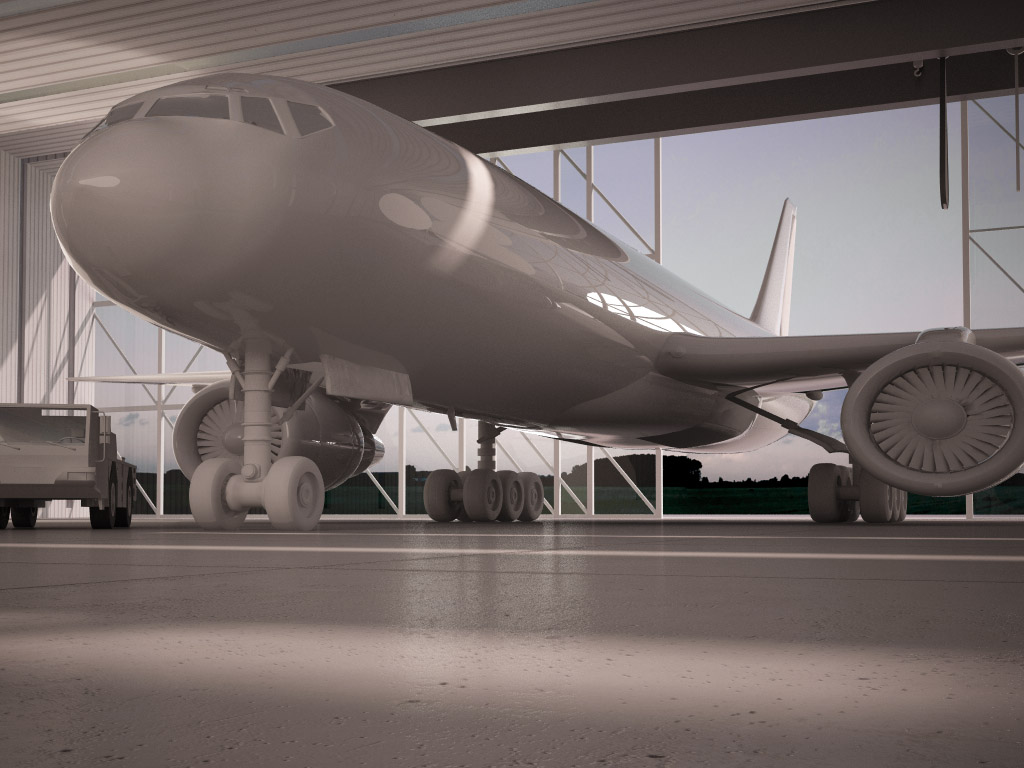


203car_A380 vs B787 aircraft hangar

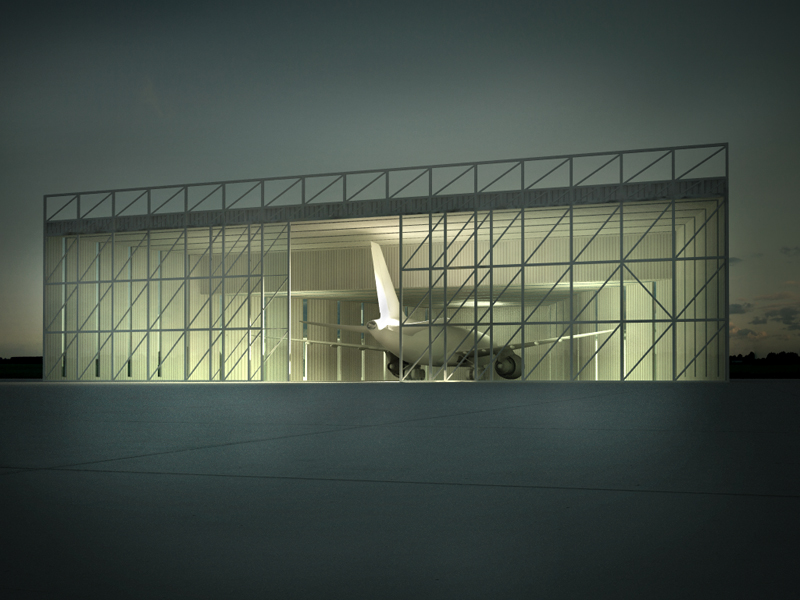
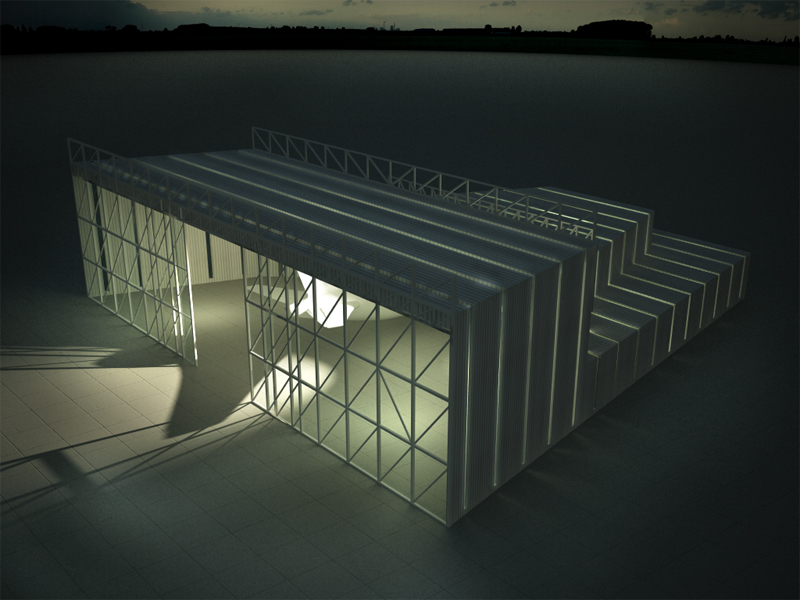 The Boeing Everett Factory used to manufacture various planes, including the 747, is the ‘largest building in the world, by volume’. The Welsh Assembly’s brief for this hangar was to design the most compact hangar which could accommodate the world’s largest passenger planes: the Airbus A380, the Boeing 747 and the Boeing 787 Dreamliner, the world’s first mostly composite commercial airplane. In doing so the proposed hangar streamlines large span composite trusses to give the hangar its identity.
The Boeing Everett Factory used to manufacture various planes, including the 747, is the ‘largest building in the world, by volume’. The Welsh Assembly’s brief for this hangar was to design the most compact hangar which could accommodate the world’s largest passenger planes: the Airbus A380, the Boeing 747 and the Boeing 787 Dreamliner, the world’s first mostly composite commercial airplane. In doing so the proposed hangar streamlines large span composite trusses to give the hangar its identity.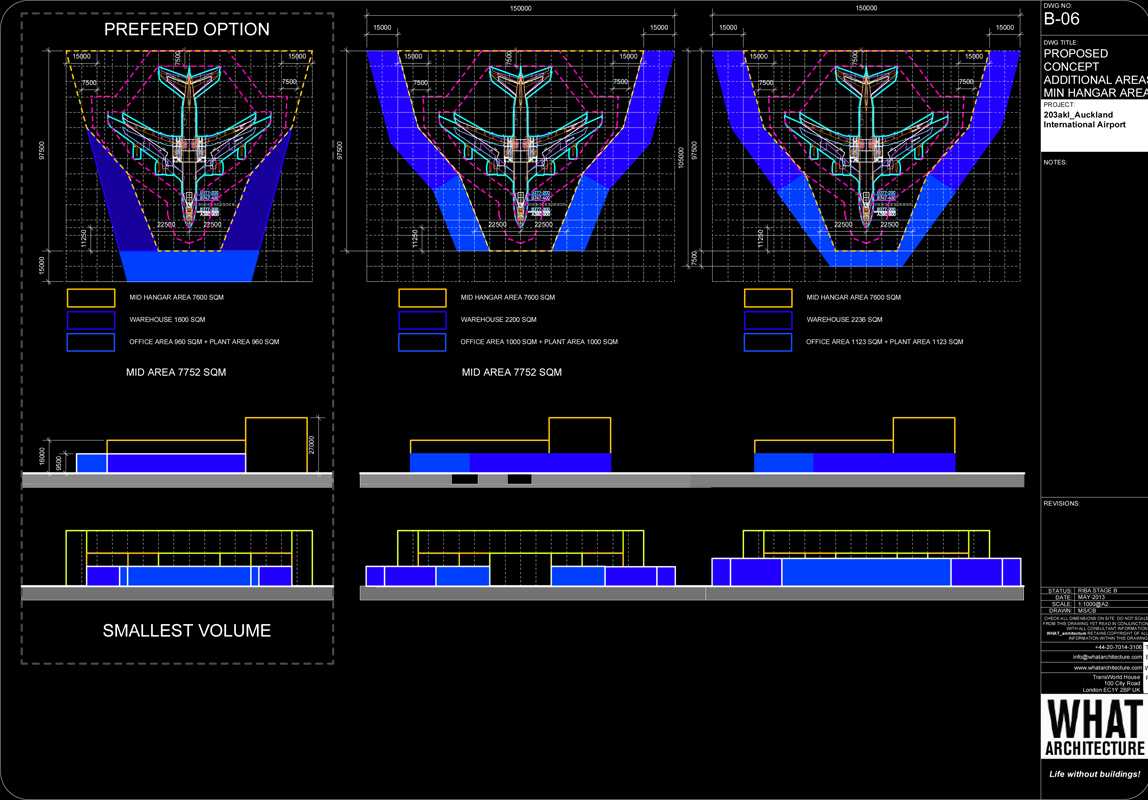 As a counterpoint to the large passenger jet that flies and unite families, is this Motiti family each with their own plane.
As a counterpoint to the large passenger jet that flies and unite families, is this Motiti family each with their own plane.